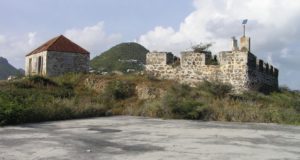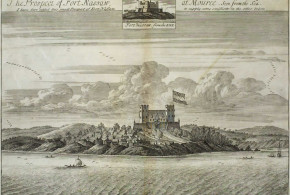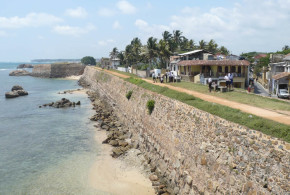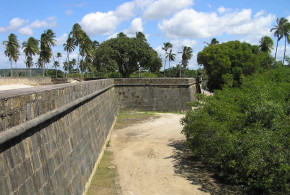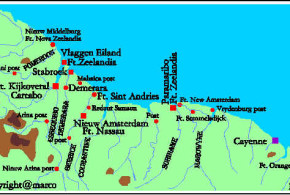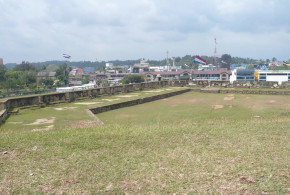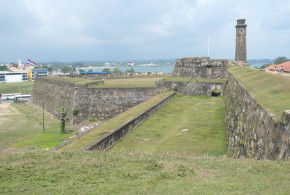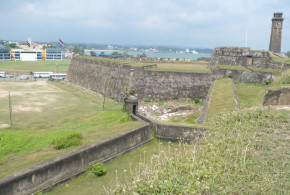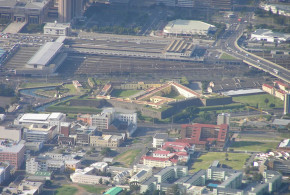Written by Marco Ramerini. English text revision by Dietrich Köster.
DUTCH EMPIRE: ARABIAN PENINSULA AND PERSIAN GULF
YEMEN, ARABIA, IRAN:
– Barendse, R. J., “The Arabian Seas, 1640-1700”, vi + 465 pp., Leiden University, 1998, Leiden, The Netherlands. Contents: Ports and hinterlands, Europeans in the Arabian Seas, the trading companies and Asian states, trade volumes and patterns, the Portuguese, the Dutch, the English, pirates and smuggling.
– Brouwer, C. G., “Cowha and Cash: the VOC in Yemen 1614-1655”, 100 pp., maps, D’Fluyte Rarob, 1988, Amsterdam, The Netherlands. The history of the Dutch-Yemeni relations in the first half of the seventeeth century.
– Brouwer, C. G., “Dutch-Yemeni encounters: activities of the United East India Company (VOC) in South Arabian waters since 1614. A collection of studies”, 332 pp. With many maps and illustrations. 1999, Amsterdam, The Netherlands.
– Brouwer, C. G., “Al-Mukha. Profile of a Yemeni seaport as sketched by servants of the Dutch East India Company (VOC), 1614-1640”, 508 pp., 6 maps, 22 plates, D’Fluyte Rarob, 1997, Amsterdam, The Netherlands.
Contents: 1. Al-Mukhâ through the ages: A selection from the sources; History up to 1600: Pre-Islamic era, 25. Islamic period: Oriental authorities, 27. Western witnesses, 28. Yemeni geographical and navigational writings, 30. Yemeni chronicles, 33. Yemeni biographical works, 36. Recapitulation, 38. Heyday, 1600-1850: Oriental and Yemeni evidence, 40. Western testimonies, 45. Decline, 1850-1950: Oriental, Yemeni and Western sources, 55. 2. Al-Mukhâ in modern research; Monographic studies: Heuristic apparatus, 61. Monographic studies, all periods, 62. Summary, 68. Hidden studies: Demarcation, 69. Hidden studies, early 17th century: Yemeni, 70. non-Yemeni, 73. Recapitulation, 81. Conclusion, 84. 3. al-Mukhâ in profile; Sources: Sources, early 17th century, 85. Ottoman sources, 85. Yemeni-Arab sources, 87. English sources, 90. Dutch sources, 91. Subject: Choice of sources, 98. al-Mukhâ, 1614-1640: City and shipping according to Dutch witnesses, 99. Some theoretical considerations, 101. Source-criticism, 103. Context: The First Ottoman Period, 1538-1636, 106. The Dutch East India Company (VOC), 1602-1799, 112. The City of al-Mukhâ 4. Situation and buildings; Situation: General location, 119. Bay and coast, 121. Currents and climate, 122. Roads and jetty, 125. Galley’s anchorage and mole, 127. Buildings: General aspect, 128. Wall, 129. Castle, 129, Sea fortresses, 130. Governor’s palace, 132. ‘Alfandinga’, 133. Mosques and shrines, 134. Houses, 135. Prominent dwellings, 137. Factories, 137. Jail, 140. Serails and public baths, 140. Coffee houses, 140. Marketplace, 141. Shipyard, 141. Cemeteries, 142. Streets and squares, 142. City plan, 144. 5. Government; Turkish rule: The Sultan: Territory, 145. Aims, 147. Periods of reign, 148. The Beylerbeyi: Appointment, 148. Journey, 151. Accession, 152. Entourage, 153. Forces, 154. Revenues, 156. Relationships with al-Mukhâ, 157. Terms of office, 164. Income, 166. Periods of rule, 167. Arab rule: The Imâm: Expeller of the Turks, 168. Pretenders to the imâmate, 170. Sphere of influence and policy, 173. The Amîr: Installation and power, 174. Subordinates, pomp, and revenues, 175. Âghâ and Amîr, 176. 6. Defence; Army and navy: Soldiers, 179. Ca’ûshes, 181. Armament, 183. Galleys, 185. Galley’s captain, 186. Sloops, 187. Defensive capacity: Wall, castle, fortresses, and galleys, 188. European threat to the city, 190. European blocade of the Bab, 194. Turkish protection, 195. Indian safeguard, 197. 7. Population; Composition and size: Explosive growth, 201. Inhabitants, 202. Residents, 203. Visitors, 204. Size, 206. Disease and death, 207. Women, 209. Strata and professions: Social levels, 211. Professions and trades, 214. Food supply and transport: Daily food, 217. Drinkable water, 218. Firewood, 220. Pack animals, 220. Riding animals, 223. 8. Religion, legal status, and language; Religion: Muslims, 237. Hindus, Jews, and Christians, 228. Conversion, 229. Legal status: The Dutch under the Turks, 232. The Dutch under the Arabs, 239. Legal position of the Dutch traders: summary, 241. Legal position of the other non-islamic merchants, 244. Language: Diversity of languages, 246. The Arabic koine, 250. Interpreters, terdjumâns, and documents, 252. The Shipping of al-Mukhâ 9. Harbour; Arrival and departure: Anchorage, 259. Surrender of sails, 261. Inspection, 262. Entry, 262. Audience, 264. Tour, 265. Discordant reception, 266. Departure, 268. Customs, services, and offices: Presents, 270. Kaftâns, 273. Anchorage, 274. Rent, 275. Transport, 276. Victualling, 281. Shâhbandar, 282. 10. Ships; Eastern ships: Types and rates, 287. Capacity and draught, 289. Hull, 292. Superstructure and rig, 294. Image, 295. Shipyards, 298. Names, 298. Western ships: Types, 300. Carrying capacity, 302. Draught, 303. Hull, superstructure, and rig, 304. Portraits, 305. Rough description, 305. Naming, 307. 11. Ordnance, crew, and owner; Ordnance: Asian ships, 309. European ships, 309. Crew: The Asians: survey, 312. Nâkhudâh, 314. Mu’allim, 316. Writer, 318. The English, 318. The Dutch: general picture, 320. commanders and merchants, 322. Masters and mates, 326. Size and rough composition, 328. Functions and pay in detail, 330. Administration of justice, 334. Owner: Western and Eastern ships, 335. 12. Shipping; Communications: Network, 339. Routes, 342. Sailing times: Seasons, 346. Duration of voyage, 349. Size: Annual totals, 355. Regional contribution, 356. Navigation: Art of navigation, 360. Depths and bottom, 364. Currents, 366. Weather conditions, 367. Provisioning, 370. Appendices: I) Shipping movements II) Crews III) Sailing times IV) Totals of ships; Weights, measures, and coinages; Dynastic tables; Glossary; Dutch Sources; Bibliography; Indices.
– Floor, Willem, “Dutch-Persian relations”, in: “Encyclopeadia Iranica”, Bibliotheca Persica Press, Center for Iranian Studies, Columbia University, New York.
– Floor, Willem “A Description of the Persian Gulf and its inhabitants in 1756,” Persica, vol. 8 (1979), pp. 163-86.
– Floor, Willem “Pearl fishing in the Persian Gulf in the 18th century,” Persica, vol. 10 (1982), pp. 209-222.
– Floor, Willem “Dutch trade with Masqat in the second half of the 18th century,” African and Asian Studies, vol. 16 (1982), pp. 197-213.
– Floor, Willem “First Contacts between the Netherlands and Masqat,” ZDMG 132 (1982), pp. 289-307.
– Floor, Willem “The Bahrein Project of 1754,” Persica, vol. 11 (1984), pp. 129-148
– Floor, Willem “A Description of Masqat and Oman anno 1673/1084 H,” Moyen Orient & Océan Indien, vol. 2 (1985), pp. 1-69
– Floor, Willem “Dutch East India Company’s Trade with Sind in the 17th and 18th centuries,” Moyen-Orient & Ocean Indien, vol. 3 (1986), pp. 111-144. This item was re-published by the Institute of Central & West Asian Studies (University of Karachi, 1993-94) enriched with comments from Pakistani scholars.
– Floor, Willem “The Dutch and Khark Island, 1753-1770, A Commercial Mishap,” 24 (1992) IJMES, pp. 441-460.
– Floor, Willem “The Dutch and Khark Island, The adventures of the Baron von Kniphausen,” in: Européens en Orient aux XVIIIe siècle. Moyen Orient & Ocean Indien (1994), pp. 157-202.
– Floor, Willem “The rise and fall of the Banu Ka`b. A borderer state in southern Khuzestan,” IRAN XLIV (2006), pp.277-315 translated into Persian by Mostafa Namdari Monfared.
– Floor, Willem “The Persian Gulf 1500-1730. The Political Economy of Five Port Cities” (Washington DC. 2006). [the history of Hormuz, Masqat, Basra, Bandar Abbas and Kong]
– Floor, Willem “The Persian Gulf. The Rise of the Gulf Arabs. The Politics of trade on the northern Persian littoral 1730-1792” (Washington DC: MAGE, 2007).
– Floor, Willem “The First Dutch Voyage to Thatta (1631). The Journal of Gregorij Cornelisz.” Anais de Historia de Alem-Mar 9/2008, pp. 381-421.
– Floor, Willem “The Dutch in the Persian Gulf,” in Larry Potter ed. The Persian Gulf in History. New York: Palgrave-MacMillan, 2008, pp. 235-60
– Floor, Willem “The Rise and Fall of Bandar-e Lengeh. The Distribution Center for the Arabian Coast, 1750-1930.” Washington DC: MAGE, 2010
– Floor, Willem “Bandar Abbas, the natural gateway to southeast Iran.” (Washington DC: Mage, 2011)
– Floor, Willem “Two revenue lists from Hormuz (1515, 1543),” in Rudi Matthee and Jorge Flores, Portugal, the Persian Gulf and Safavid Persia (Louvain: Peeters, 2011), pp. 81-97.
– Floor, Willem “The Persian Gulf. Links with the Hinterland” (Washington DC: MAGE, 2011)
– Floor, Willem “The Hula Arabs of the Shibkuh Coast of Iran.” Washington DC: MAGE, 2014.
– Qasimi, Sheikh Sultan bin Mohammed Al, “Power Struggles and Trade in the Gulf: 1620-1820”, 214 pp. maps, University of Exeter Press, 1999, Exeter, United Kingdom. Contents: The Historical Geography of the Gulf, Bandar Abbas (1623-1763), Bandar Riq and Khark Island (1753-1766), Bushire in turmoil (1762-1769), Bushire from turmoil to peace (1769-1820), conclusion.
 Colonial Voyage The website dedicated to the Colonial History
Colonial Voyage The website dedicated to the Colonial History





